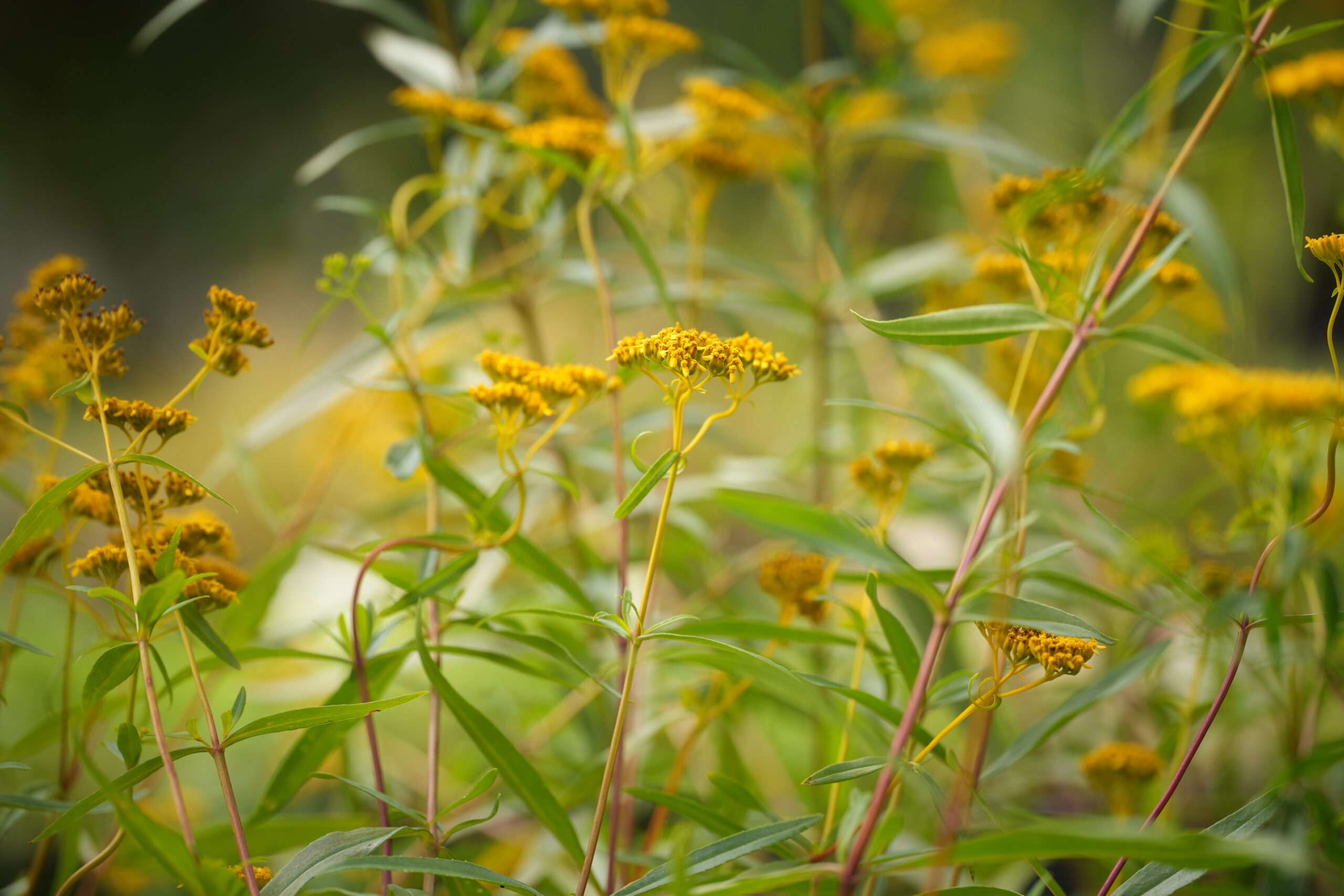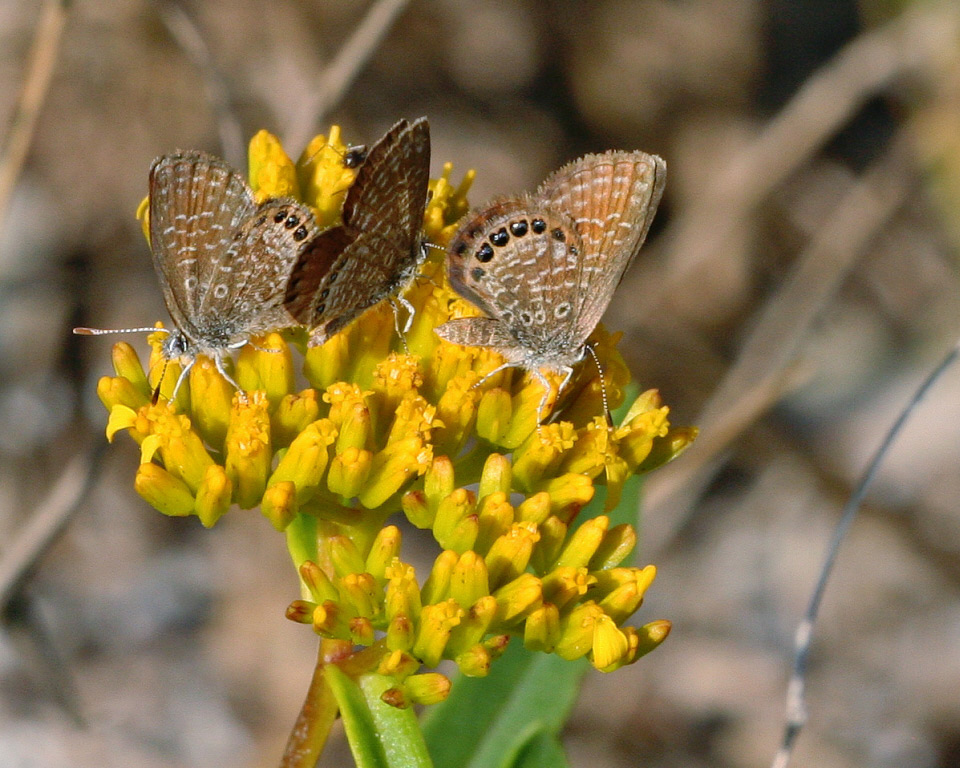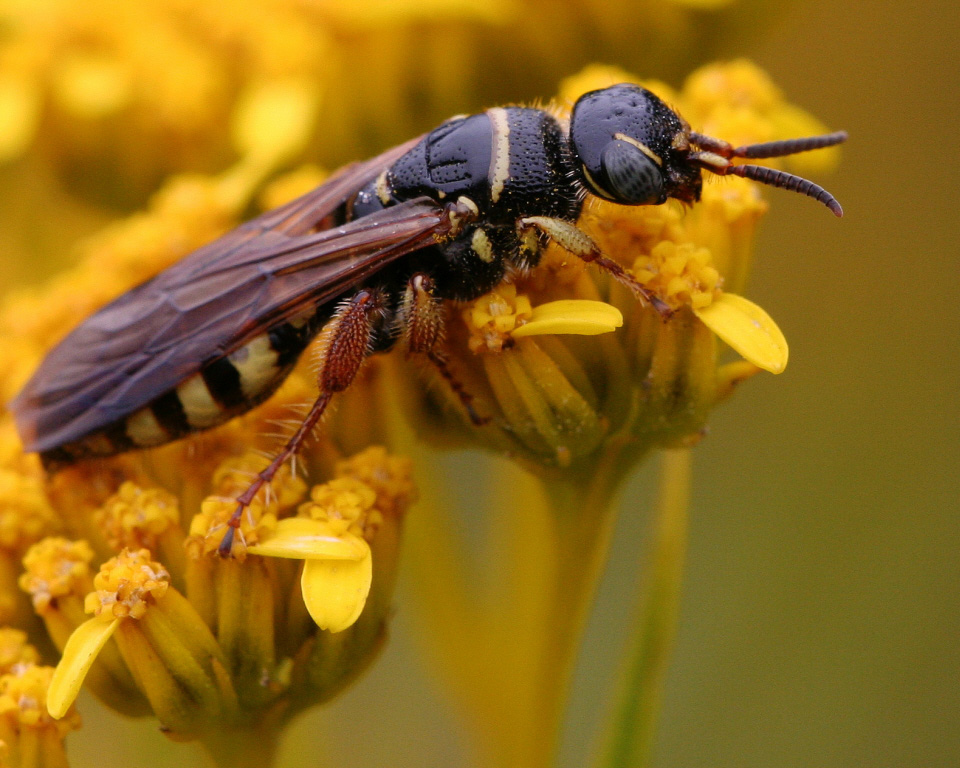Narrowleaf yellowtops
Pictured above: Narrowleaf yellowtops (Flaveria linearis) by Emily Bell. Click on terms for botanical definitions. View post as a PDF.
Narrowleaf yellowtops (Flaveria linearis) occur naturally in depression and basin marshes, wet prairies, pine rocklands, hydric hammocks, mangrove swamp and tidal marsh edges, and sand dunes, as well as in disturbed or ruderal areas. It typically blooms late summer through fall, but may bloom year-round. The small but prolific yellow flowers are especially attractive to bees, wasps, flower beetles and numerous butterflies, including the Cassius blue, Julia and many species of skippers.
Narrowleaf yellowtops’ inflorescence is a showy corymb of bright yellow flowers that are somewhat flat-topped (hence the common name). Individual flowers are composed of several disk florets and a single ray floret. They are small but great in number. Leaves are linear, sessile and oppositely arranged. Leaf margins are typically entire but may be somewhat toothed. Branched stems are glabrous and may be reddish in color. Seeds are born in achenes.
The genus name Flaveria is from the Latin flavens (flaveo), meaning “gold” or “yellow” and alludes to the flower color. The species epithet linearis is Latin for “consisting of lines” or “linear,” referring to the leaf shape.
Family: Asteraceae (Aster, daisy or composite family)
Native range: Most coastal peninsular counties from Levy and St. Johns south to the Keys; Taylor, Wakulla, Jefferson and Madison counties in the Panhandle
To see where natural populations of Narrowleaf yellowtops have been vouchered, visit florida.plantatlas.usf.edu.
Soil: Moist to seasonally inundated, well-drained, nutrient-poor sandy or mucky soils
Exposure: Full sun to minimal shade
Growth habit: 2–3’ tall, usually wider than tall
Propagation: Seed, division, cuttings
Florida regions of landscape suitability: North, Central, South
Garden tips: Narrowleaf yellowtops is a tough plant that has a high tolerance for stress. It does well in urban settings and areas where soil may be disturbed. It is highly drought, pest and salt tolerant (but not in frontline dunes). Because it is grows low and wide, it does well in mixed plantings and as a tall groundcover.
Narrowleaf yellowtops is often available at nurseries that specialize in native plants. Visit PlantRealFlorida.org to find a native nursery in your area.
Learn more about Narrowleaf yellowtops from the Florida Native Plant Society and the Institute for Regional Conservation.



